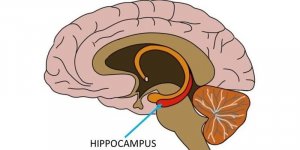| News / Science News |
Pregnancy losses and large numbers of children linked with increased risk of cardiovascular disease
Women who experience pregnancy loss and do not go on to have children are at greater risk of cardiovascular disease, such as heart disease and stroke, compared with women who have only one or two children, according to new research from the University of Cambridge and the University of North Carolina.
During pregnancy, the mother’s body experiences changes during pregnancy including weight gain and accumulation of abdominal fat, higher levels of cholesterol, increased insulin resistance, and changes in the structure of the heart. Although most changes that occur during pregnancy are temporary, these changes are known to be risk factors for cardiovascular disease in the general population.
Previous studies have attempted to assess the relationship between pregnancy and childbirth on the one hand and cardiovascular disease on the other. However, due to limitations in these studies – including not taking into account breastfeeding history and grouping together women who had never been pregnant with those who had been pregnant but experienced pregnancy loss – their results have been inconclusive and sometimes contradictory.
In this new study, 138 women reported having experienced pregnancy loss and having no live born children. 3,108 women had one or two live born children, 3,126 had 3-4 live born children, and 1,694 had five or more live born children.
The researchers found that women who experienced pregnancy loss and did not have any live born children were at 64% greater risk of both coronary heart disease and 46% greater risk of heart failure compared to women with one or two children. Women with five or more births had a 38% higher risk of having serious heart attack, regardless of how long they breastfed for.
The team say that there may be several possible reasons for the link between cardiovascular risk and multiple births. Repeated pregnancies could result in long-lasting changes within the body including weight gain, especially around the waist, and increased levels of cholesterol in the blood.
Also, the number of children a woman has also encompasses other factors including child-rearing, age at menopause and health conditions. Therefore, the researchers say it is unclear whether the increased risk of heart failure, coronary heart disease and heart attacks reflect the direct impact of repeated pregnancies, or the stressors associated with rearing multiple children, or both.
The increased risk of coronary heart disease and heart failure found in women with prior pregnancies, but no live born children, may reflect the increased risk previously identified after a history of miscarriage.
Several mechanisms have been proposed to underlie the relationship between miscarriage and coronary heart disease, including immune disorders, chronic disease and dysfunction of the endothelium (cells that line the interior of blood vessels).
This study isn’t designed to stress and worry women, especially those who have experienced the distress of pregnancy loss. Most women know by the age of 40 how many children and pregnancy losses they have had, which is years before most heart attacks and strokes occur.
This provides a window of opportunity to make lifestyle changes, such as exercise and diet that can help reduce the risk of cardiovascular disease. (University of Cambridge)
YOU MAY ALSO LIKE




